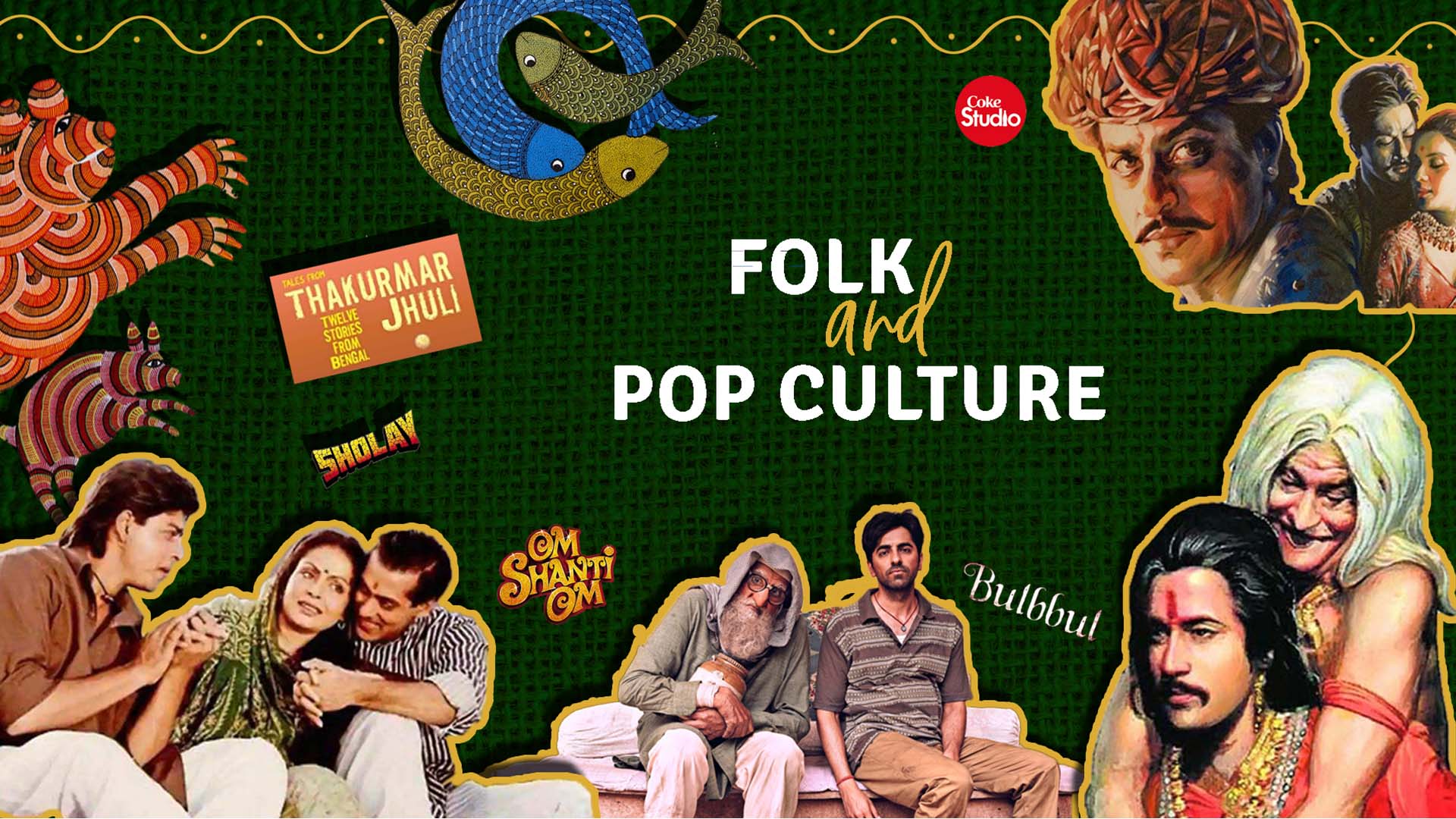Recent Posts
- Chekka Bommalata - the exquisite art form and its dwindling culture
- Phad in the times of Corona - In conversation with a Phad artist
- Folk and Pop Culture
- Bridging Tradition and Modernity | Karmic justice in The Man-Eater of Malgudi: A throwback to the Jataka and Panchatantra tales
- The Exquisite Travelling Temples of Rajasthan - Phad
- Bauls – the bards of Bengal
- Bridging Tradition and Modernity | Mohini-Bhasmasur in Malgudi
- Harikatha: One Tradition, Many Stories
-

Folk and Pop Culture
Isha Bhattacharya
If I had to choose between laying on my grandmother’s lap as she lovingly narrates a story to me and watching the same story with immersive visuals and sounds on my television screen, then — of course — I would choose my grandmother. But do I have to choose...?
Many argue, and rightly so, that the advent of technology took us away from our traditional folk cultures. However, I beg to differ. Growing up, there was no dearth of folk-stories as I was surrounded by constant re-runs of Vikram-Betal, Thakumar Jhulli, Akbar-Birbal, Tenali Rama, the list goes on…. Rather, I had greater access to them, and, not just stories from all parts of my country but from across the globe. The kind of access children from previous generations could not receive. And, the synthesis of pop and folk culture, is primarily to be credited for it.
Folk art has had a monumental influence on our movies, music, TV shows, advertisements and popular culture. And it is safe to say that, it is because of the striking similarities they both possess. For a start, pop and folk arts are intrinsically charming. They are bewitchingly, dazzlingly charming in the manner in which they get their messages across: they know precisely how to lower our defences and enter our imaginations with great ease. Secondly, they help create a sense of belonging and companionship that is so fundamental to the human experience. And lastly, they both provide the means for expressing social, ethical and emotional needs of the society, at large.
Hence, it comes with no surprise that the first Indian feature film, Raja Harishchandra directed by Phalke was a mythological tale. Even in recent times, mythological themes like good fighting and destroying evil (Sholay) brothers uniting (Karan-Arjun), reincarnation (Om Shanti Om), sacrifice (Mother India) and tolerance (Bombay, and Roja) keep recurring in films. And, folk legends of kings and queens (Mughal –e- Azam, Razia Sultana and Jodha Akbar), outlaws and dacoits (Reshma aur Shera) as well as, stories about legendary pairs such as Heer-Ranjha, Mirza-Sahiban (in Mirzya) and Dhola-Maru, who have lived and died for love have been immortalized countless times, through our films.
Then some movies unequivocally celebrate Folk culture and stories. Be it Amol Palekar’s Paheli, that was a visual celebration of Rajasthan, its desert, native culture, ethnicity and folk stories or Bhaskar Hazarika’s National Award Winning Assamese film Kothanodi that paid homage to Assam's most beloved collection of children's tales, Burhi Aai'r Xaadhu with elements of dark magic realism. Even on the OTT platforms, movies that have been inspired by folklores such as Gulabo Sitabo and Bulbul, have garnered immense success.
And not just in our cinema, folk motifs have also found its way in Indian film music and dances. Several folk tunes, for example, Yara Sili Sili, Kesariya Balama, Navrai Majhi, Jugni etc. are all based on popular folk songs. Two of the industry’s greatest composers, S.D. Burman and A.R. Rahman also have been incredibly influenced by folk tunes. For the film Sujhata, Burman recreated a composition by Ghazi Khan for the song Sun mere Bandhu re. Even Rahman borrowed Ghazi’s music for Nimbooda in the film Hum Dil De Chuke Sanam and has since introduced many folk ballads such as Genda-Phool in Delhi-6 and Kun Faya Kun in Rockstar.
Even the acclaimed Coke Studio gained extensive viewership and praises for featuring authentic folk music and musicians like the Bengali Baul folk Moner Manush, the Nepalese Buddhist hymn and traditional Jordanian melody Zariya and the Rajasthani folk song Chowdhary among many others.
On the entire entertainment industry by large and in the use of song, dance, humour, and narrative structure, the folk plays of Lavani, Tamasha of Maharashtra, Jatra of Bengal, Bhavai of Gujarat, Nautanki of northern India and Terukkuttu of Tamil Nadu have also had great significance.
Folklore hence has made a lasting impact on our country's popular culture. As it directly appeals to the emotions rather than the intellect of the audiences and commands a variety of forms and themes to suit the taste of the masses.
But the most remarkable thing about folklore in popular media is its fluidity. As Ramanujan in his Preface to Folktales from India, has said, “no selection can truly ‘represent’ the multiple and changing lives of Indian tales.”. And has aptly defined it as “a poetic text that carries some of its cultural contexts within it; it is also a travelling metaphor that finds a new meaning with each new telling.”
